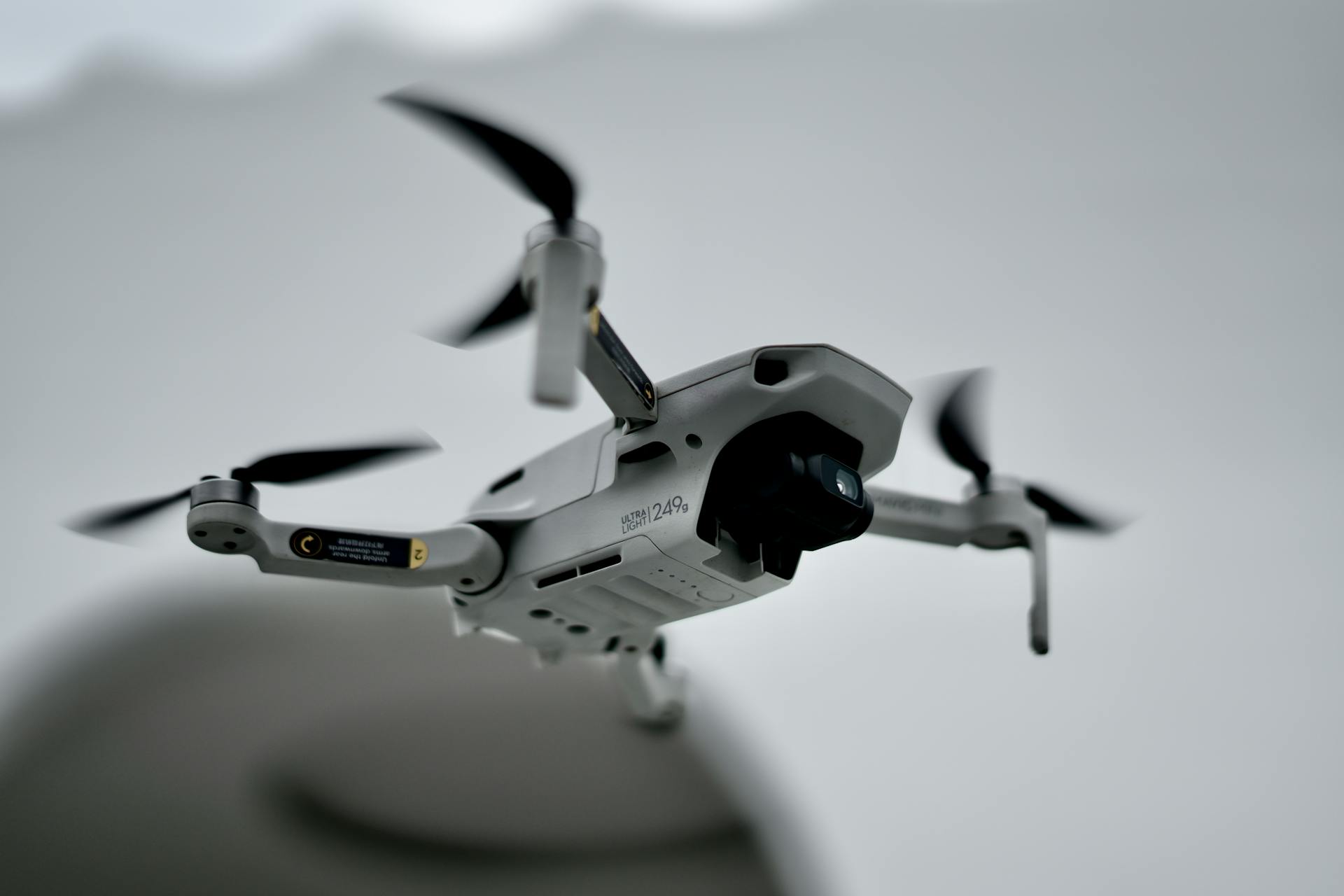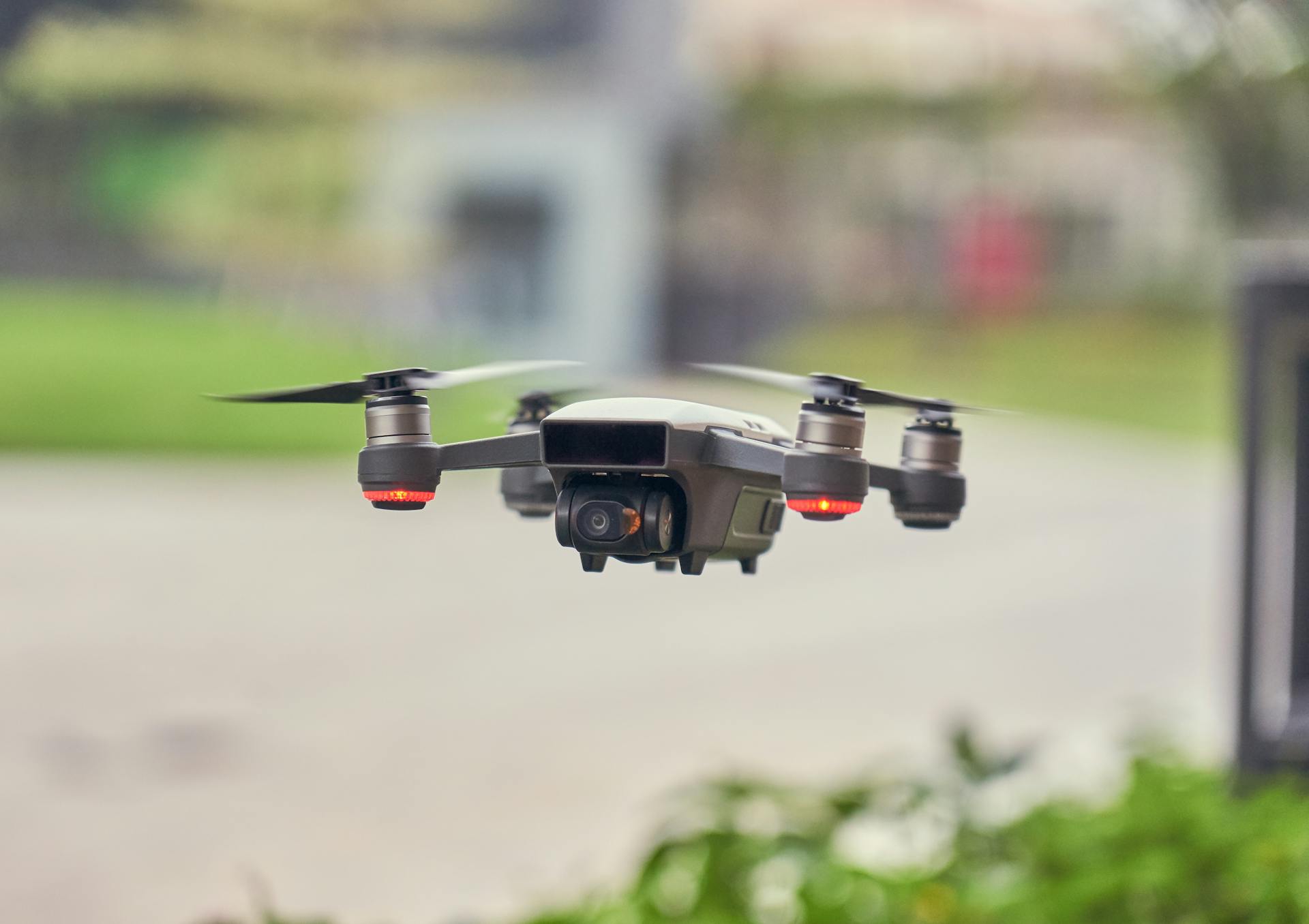
The military drone industry has undergone a significant transformation in recent years, with advancements in technology leading to improved image quality and increased capabilities.
High-resolution images captured by military drones have enabled more accurate targeting and surveillance.
In 2019, the US Air Force successfully used a MQ-9 Reaper drone to capture high-resolution images of enemy positions in the Middle East.
The use of military drones has also led to a reduction in the number of ground troops required for reconnaissance missions.
Readers also liked: How High Can a Military Drone Fly
Army's K1000ULE Program
The Army's K1000ULE program is a game-changer in the world of military drones. The U.S. Army spent $20 million acquiring the K1000ULE, which is the longest-endurance, fully electric, zero-emissions autonomous aircraft in its size and weight category.
The K1000ULE is designed to provide an Aerial Tier Network Extension for communications, ISR, and electronic warfare. It's been used for exercise support and various projects, and its Ultra-Long Endurance capabilities make it a valuable asset.
The aircraft can fly for nearly 76 hours nonstop, breaking a record in the process. This is no small feat, and it's a testament to the K1000ULE's impressive capabilities.
The K1000ULE is almost impossible to detect, as it's typically misidentified as a bird by sensors and radar equipment. This makes it a stealthy and effective tool for military operations.
To launch the K1000ULE, all you need is a vehicle to help the wings catch the wind and take flight. This ease of use makes the K1000ULE an ideal UAS for a variety of Army missions.
Future of Warfare
The future of warfare is becoming increasingly reliant on drones. Russia's invasion of Ukraine in 2022 highlighted the potential of drones in modern warfare.
Drones provide a cost-effective and lethal option for military operations. They can swarm targets, conduct surveillance, and strike when necessary.
The United States is investing heavily in drone technology, with the Air Force's Next-Generation Air Dominance program set to incorporate 1,000 Collaborative Combat Aircraft. These "loyal wingmen" UAVs will enable the Air Force to conduct more risky operations.
China is also elevating its UAV prowess, with the recent unveiling of the CH-7 indicating a broader military strategy.
Image Resources
When it comes to accessing high-quality images of military drones, there are several online resources available.
The US Air Force's official website is a great place to find images of military drones in action.
The website features a gallery of photos showcasing various types of drones, including the MQ-9 Reaper and the MQ-1 Predator.
NASA's website also offers a wealth of information and images about military drones, including their development and testing.
The MQ-9 Reaper is a popular subject for drone enthusiasts, with many images and videos available online.
The MQ-9 Reaper is a multi-mission drone capable of performing a variety of tasks, including surveillance, reconnaissance, and combat.
The US Department of Defense's website is another valuable resource for finding images of military drones.
The website features a database of images and videos related to military operations, including those involving drones.
The MQ-1 Predator is a smaller, more agile drone compared to the MQ-9 Reaper, but is still a highly capable aircraft.
The MQ-1 Predator is often used for reconnaissance and surveillance missions, and has been used in a variety of combat roles.
Recommended read: Ar Drone 1
Frequently Asked Questions
What do military drones look like at night?
Military drones at night appear as small dots of light or flashing lights, often mistaken for stars, but can be identified by their distinct color patterns and movement.
How do you detect military drones?
Military drones can be detected using various technologies, including radio frequency analysers, acoustic sensors (microphones), optical sensors (cameras), and radar systems. These methods can help identify and track drones, but the specific approach may depend on the drone's characteristics and the detection environment.
What is the difference between a military drone and a regular drone?
Military drones are larger, heavier, and more versatile than regular drones, often weighing over 600 kilograms and designed for combat roles. They are engineered for specific mission needs, setting them apart from commercial drones.
Sources
- Military aircraft - UAVs, Drones, Autonomy (britannica.com)
- These U.S. Military Drones Are Breaking Records (slashgear.com)
- Share on LinkedIn I (linkedin.com)
- Share on Twitter L (twitter.com)
- adaptation (eurasiantimes.com)
- The War Zone (twz.com)
- A guide to military drones (dw.com)
- Military Drone Pictures, Images and Stock Photos (istockphoto.com)
Featured Images: pexels.com


